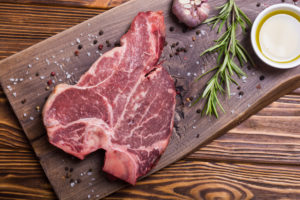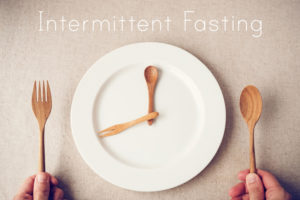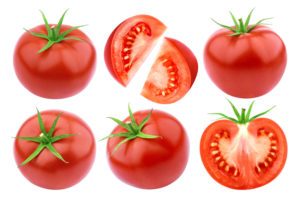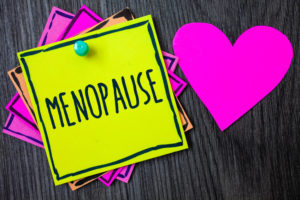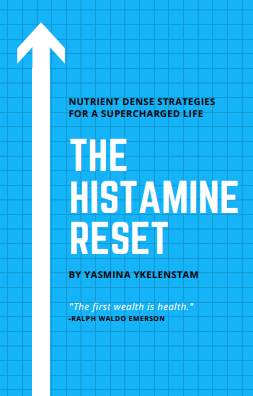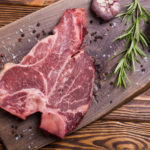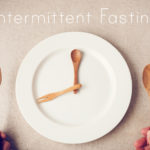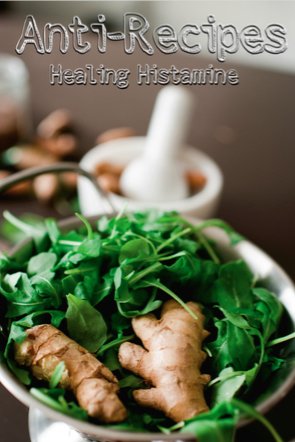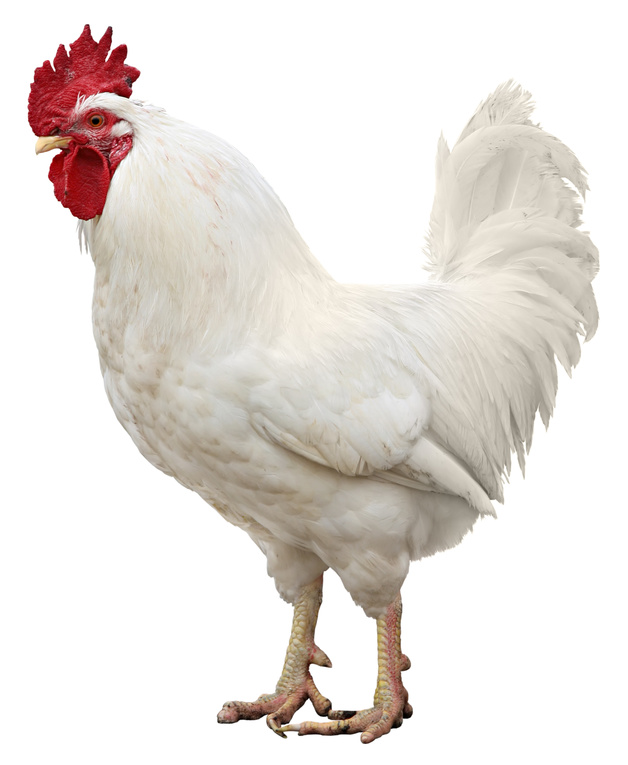
While it’s true that the foods in this post are technically classified as being either low in histamine or not triggering the release of histamine already in our body, they still aren’t part of my diet. Read on to find out what they are and why you won’t find me chowing down on them soon (or at least not regularly – we all need a treat sometimes). Please don’t however misunderstand what I’m saying here – elimination of foods long term isn’t healing. I found myself reacting to more and more foods till I was down to just a few. Click here to learn the steps I took to now be able to eat a variety of foods and how to create your own histamine balanced diet and healing plan.
Wheat
Wheat was something I held onto for a long time, reassuring myself that it wasn’t contributing to the basket ball I appeared to be smuggling under my sweaters. I had myself tested for celiac quite early on in the game, before I’d even heard of histamine intolerance/mast cell activation, and was immensely relieved that the negative test meant I could continue scarfing down an entire delicious loaf of pizza dough bread. Oh the lovely yeastiness of it. Little did I know that, apart from wheat’s potential to cause an all out systemic inflammatory response in non-celiacs, (read my post It’s Not in Your Head, Gluten Hurts non-Celiacs Too here), and it’s ‘non-gluten based inflammation’ causing potential (read my post Wheat Triggers Inflammation Even if Yore Not Celiac here), the yeast in the wheat products was making my histamine go through the roof. I chased my tail for many years believing I had a candida problem, but it turned out to be something else that I’ll be covering in just a minute.
Most grains
Ye gods, the devastation of figuring out that it wasn’t JUST wheat causing my bloating, chronic and excruciatingly painful constipation, and inability to properly swallow (ever get that lump of food stuck in your throat and nearly pass out in agony and fear as it painstakingly inches its way down your oesophagus?), was actually caused by a number of grains. While we do already know that these grains share wheat characteristics that cause inflammation, oxalic acid is also a huge suspect. You can read all about it in my post Low Histamine Low Oxalate Diet: The Missing Link? here
This actually turned out not to be the worst thing in the world because I eventually learned how to use non-grain flours for delicious baking. Though I’ve written a number of nutrient dense cookbooks, I’m the type of person who wants to get in and out of the kitchen as quickly as possible, unless I’m cooking a several course meal for friends, or baking. I love my baking and am never happier than when I’m elbows deep in a mixing bowl inhaling the gorgeous vanilla and cacao scents. You can download my free nutrient dense, whole food, dairy gluten and nut free muffin book here.
Processed foods
When initially clinging to the low histamine food lists, I was reassured to find a number of my favourite foods on the allowed list. (Here’s a round up of histamine food lists for you.) Sadly this was because I was an incredibly unhealthy eater back then, believing that an organic pizza was a reasonable way to get my daily ‘five a day’ servings. My niece recently experienced some histamine symptoms while on holiday together. After a quick read of my blog she asked me to condense my advice into one easy (for a young graduate) to implement behaviour. I replied that she should give up processed foods. If only from a histamine perspective, something sitting on a shelf for months/years is no longer a fresh food. Bacteria = histamine. Not only that, but they’re usually jammed full of trans fats which create or contribute to inflammation. Trust me, if you have histamine induced inflammation, the very last thing you need is something else that triggers overall inflammation, even if it’s not directly causing a histamine increase. See my post on the Inflammation Bucket for more of an explanation.
Citric acid
Ok, so please, hands up if, like me, you once believed citric acid used as a food additive is made from citrus fruits? Ay, those were the days, before I stopped to question pretty much everything I put in my mouth. Turns out it’s actually usually made from mold that’s often grown on corn. Though they say the aspergillus is filtered out, it’s going nowhere near my diet. Except once every few months when I totally lose self control and buy that can of organic palm hearts for my salad. No getting away from that one. But this was one that threw me for the longest time. I kept reacting to foods and couldn’t work out why. It was on some lists as ok for us and other times I was told it wasn’t ok. It’s in pretty much every processed food nowadays and in some beauty products. Mold is of course a histamine and mast cell trigger. You can read more about the link in my post The Mold-Histamine link here.
Chicken
While there is nothing more comforting to me than a home made chicken noodle soup or a beautifully roasted chicken (my stomach rumbled as I said that), this food I keep on one of the longest rotations imaginable. Not only are the poor chickens kept in terrible inhuman conditions that must raise their stress levels (and are passed on to us hormonally?), they’re fed inflammatory grains. How the chicken is cooked is also a huge concern, I loved mine very crispy and roasted, which triggers the formation of advanced glycation endoproducts. AGE’s trigger gut inflammation (specifically leaky gut) and all kinds of nasty stuff like unwanted mast cell activation. And guess what, crispy chicken skin contains far more than any food. Interestingly roasting other foods can make them up to three times more allergenic too. You can read all about it here in my post Junk Food Triggers Allergies and Causes Leaky Gut. I have however managed to find flax seed fed chicken eggs that are super high in omega fatty acids at Whole Foods and a study on the anti-inflammatory effects of organically raised egg yolk.
Carrageenan
Is there a product in Whole Foods that does not contain this food additive? They get away with it because it’s derived from seaweed. Once it has been structurally messed with however it becomes so inflammatory that it’s used by scientists testing new antihistamines and anti-inflammatories. Go now and take a look in your food cupboard and beauty products. It’s literally everywhere. You can read more about it here.
Sugarcane derived sugar
This one is a very personal choice. For years I believed I had fructose malabsorption (yup that’s a thing) but it turned out that when inflamed, sugar of any kind is likely to trigger more of it. In my case I was eventually able to shake off the exhaustion it caused just by avoiding sugar cane. I later realised that any high glycemic index sugar (one that causes a high and then a crash of blood sugar) including honey and maple syrup (both touted as health foods) or any overly processed one like agave, had a really bad effect on me. Coconut sugar, while high in fructose, does not tire me or cause a GI response. It also works great in muffins, see above for a link to my free muffins ebook. But please remember, we’re all very different and what works for me might not for you.
It’s finally here! Man Food – a high nutrient antihistamine and anti-inflammatory ingredient filled book geared towards guys, women who love to work out, yoga like they mean it, or just load up on healing nutrients. Features my personal shopping list of antihistamine and anti-inflammatory foods.
The Anti-cookbook and all liquid Anti-Detox Book, don’t treat any conditions, but feature a plethora of the high nutrient antihistamine and anti-inflammatory ingredients that have been instrumental in helping me feed myself on a limited diet. The Anti-cookbook features a four page list of antihistamine and anti-inflammatory foods and comes in regular and Paleo.
The Low Oxalate Cookbook features antihistamine and anti-inflammatory rich recipes.
Don’t miss the Low Histamine Beauty Survival Guide for non-toxic beauty tips, the skinny on histamine releasing (mast cell degranulating) beauty ingredients, antihistamine and anti-inflammatory beauty alternatives and the top brands natural brands I’ve found.
Take a peek at my other low histamine and antihistamine cookbooks for more high nutrient recipes
—-REFERENCES—–
“Citric acid.” Wikipedia. Wikimedia Foundation, n.d. Web. 28 Jan. 2017.
Mahmoudi M1, Ebrahimzadeh MA, Pourmorad F, Rezaie N, Mahmoudi MA. “Anti-inflammatory and analgesic effects of egg yolk: a comparison between organic and machine made.” European Review of Medical Pharmacology Sciences 2013 Feb;17(4):472-6. Web.


